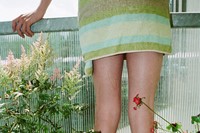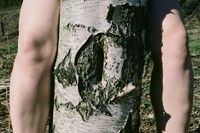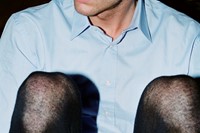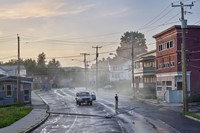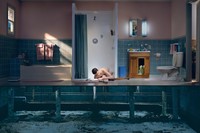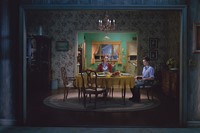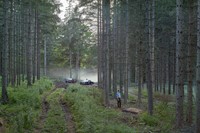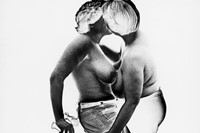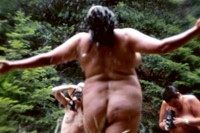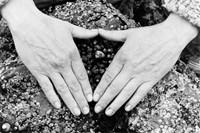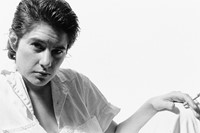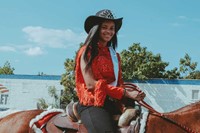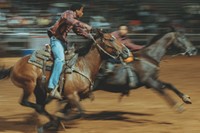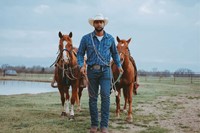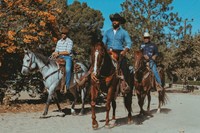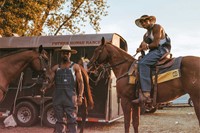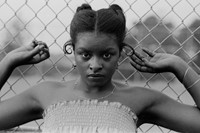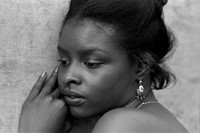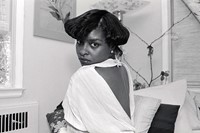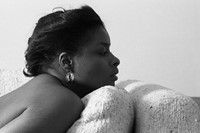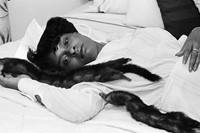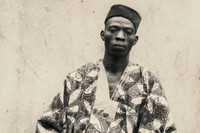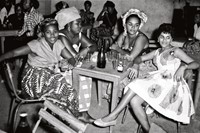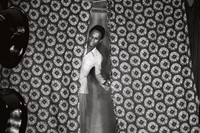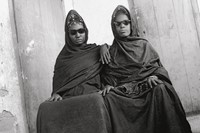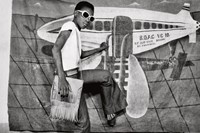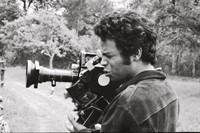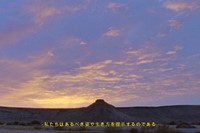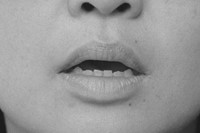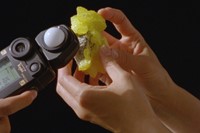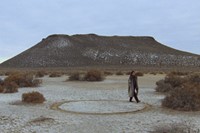From Viviane Sassen’s Folio, which presents her “birth” as a photographer, to Steven Cuffie’s mysterious portrait of one woman in 1970s Baltimore, here are seven of the best new photo books
Folio by Viviane Sassen
The 1990s signalled the arrival of a new generation who embraced experimentation over convention, preferring a DIY approach to art making aligned with the grunge ethos. While pursuing her MFA from the Royal Academy in Arnhem, photographer Viviane Sassen and friends staged fashion shoots at home, exhibited the work in squats, and made zines to share and build community. Not long after her father passed, Sassen created her first handmade photo book from these works in 1996; now she revisits this moment of her “birth” as a photographer with Folio by Viviane Sassen (Note Note Éditions). The book stands as a portrait of the artist as a young woman entering adulthood with a vision wholly her own, melting the illusory boundaries between art, photography, and fashion with a scintillating blend of intimacy, seduction, and mystery to intoxicating effect.
Read our interview with Viviane Sassen here.
Gregory Crewdson, Walter Moser (ed.)
Since the mid-80s, photographer Gregory Crewdson has constructed spellbinding tableaux of contemporary American life set in the majestic expanse of the New England landscape that unfold like scenes from a dream. Driven by the search for something just outside our grasp, Crewdson deftly blends elements of auteur cinema, old master painting, staged photography, and mid-20th century realism to masterful effect, each large-scale image is conceived and executed as a small film production, prepared months in advance with the participation of dozens of specialists. Now the artist’s first-ever retrospective, Gregory Crewdson (The Albertina Museum / Prestel), published to accompany a major exhibition at the Albertina on view through September 8, curator Walter Moser seamlessly weaves a visual chronology that brings together more than 300 photographs from nine groups of work that explore the exquisite frisson of anxiety, desire and paradox in post-industrial America.
Read our interview with Gregory Crewdson here.
Tee A Corinne: A forest fire between us, Charlotte Flint (ed.)
In a world that refused to see lesbians, photographer, artist and writer Tee A Corinne (1943–2006) would not be erased. She devoted her life to making visible what so many fear: female desire that exists outside the male gaze. During her life she authored 15 books, three chapbooks, and edited seven volumes of work devoted to the erotic. Now curator Charlotte Flint delves deep into the artist’s photography archive for the new book, Tee A Corinne: A forest fire between us (MACK), selections from which will be on view at Webber 939 in Los Angeles in September. The book charts Corinne’s singular career at the height of the second wave of feminism, working as an openly queer woman despite the open discrimination lesbians faced, and reminding us that play and pleasure remain radical acts of liberation in a heteronormative society.
Read our feature on Tee A Corinne here.
Eight Seconds: Black Rodeo Culture by Ivan McClellan
In August 2015, photographer Ivan McClellan attended the Roy LeBlanc Invitational, the longest-running Black rodeo in the United States, and immediately felt at home amidst the barbecue grills, line dances and hip-hop music. Over the next decade, he chronicled the community inside and outside of the arena, crafting an indelible portrait for his first monograph, Eight Seconds: Black Rodeo Culture (Damiani Books). Envisioned as a “day at the rodeo”, the book begins in the early morning on the ranch, to the parades and daytime festivities, before the main event begins after the sun goes down. McClellan’s sweeping landscapes, intimate portraits and electric action shots evoke the spirit of the Old West and the mythic cowboy archetype, which owes much to the liberated Black cowhands who built the nation from the ground up.
Karen 1979 by Steven Cuffie
Following the death of their father, photographer Steven Cuffie (1949–2014), his adult children Marcus and Morgan began going through their father’s personal archive, discovering a wealth of portraits made in the 70s and 80s. Among those were a series of intimate black and white photographs of a young Black woman named Karen. The photographs, first exhibited at New York Life Gallery in 2022, have been collected in the new zine, Steven Cuffie: Karen 1979. Comprised of just 26 pictures, Karen 1979 is a sensual meditation on histories untold, filled with an air of mystery that discretion affords. There is a tender sense of ambiguity that speaks without words, inviting the imagination to engage with a story that can never be told in full but felt in these encounters between artist and muse.
Read our feature on Steven Cuffie here.
The African Gaze: Photography, Cinema and Power by Amy Sall
The history of photography and European colonisation are inextricably intertwined throughout the 1800s, the medium used to propagate foreign interference on sovereign lands across the Global South. But the 20th century heralded a revolution whose time had come. Across Africa, photographers and filmmakers seized the means of production, chronicling their communities through independence as new nations took shape. In recent years, trailblazing photographers like Malick Sidibé, Seydou Keïta, James Barnor, Samuel Fosso, and Sanlé Sory have achieved global recognition largely unafforded to their peers until now. With The African Gaze Photography, Cinema and Power (Thames & Hudson), writer, researcher and archivist Amy Sall brings together the work of 25 photographers and 25 filmmakers in masterful compendium of art, film and cultural history that evokes the warmth and wonder of a family photo album.
Collective Study, Enquiry #5 by Goldwin 0
In a culture that idolises individualism and hierarchy, collectivism is a radical act of solidarity. Education has trained us to imagine study as a solitary pursuit, isolated inside the mind as intellect, a mere silo of thought. But what if there was a way to transform knowledge and understanding into wisdom through a cooperative approach? This is where Collective Study, Enquiry #5 by Goldwin 0, led by OK-RM (InOtherWords), begins. Published in both English and Japanese and illustrated with 384 colour plates, the book brings together work by participants including Lila Matsumoto, Karl Nawrot and Nur Abbas to imagine a new paradigm for a future world, where we create spaces for communal study. Here all disciplines coexist to illuminate new forms of practice that reflect a profound respect for the inherent interconnectivity of life itself.



